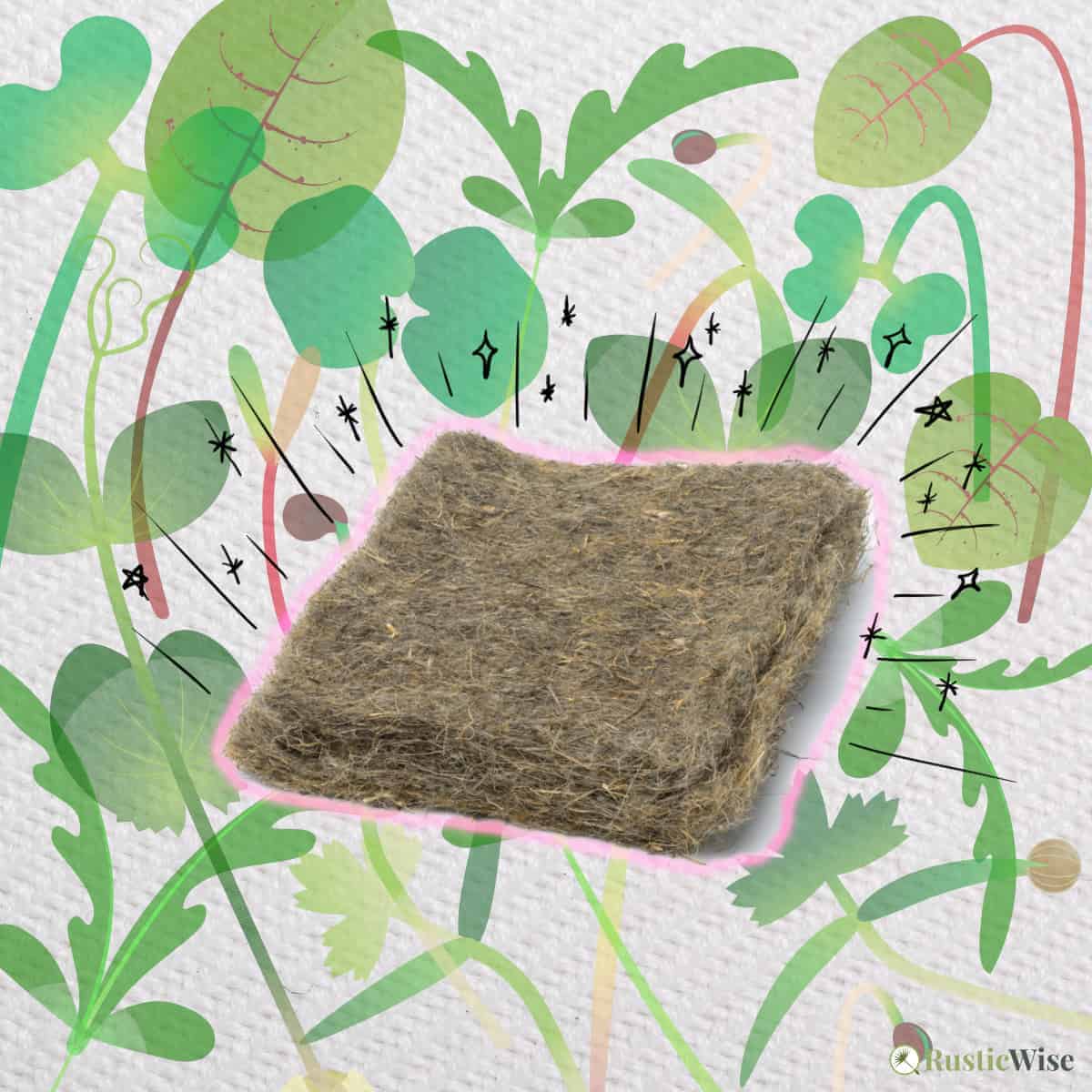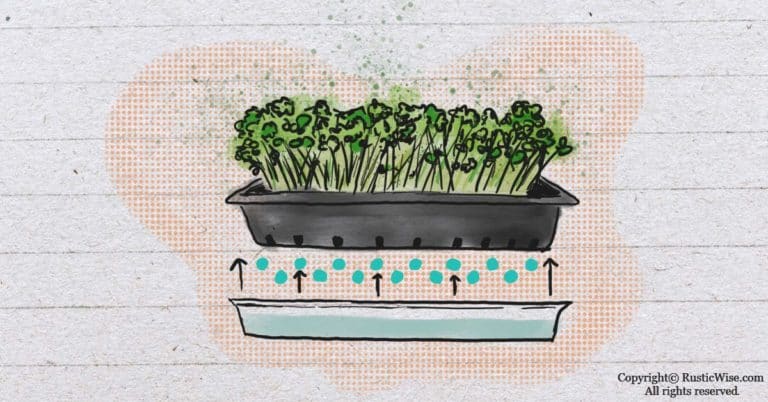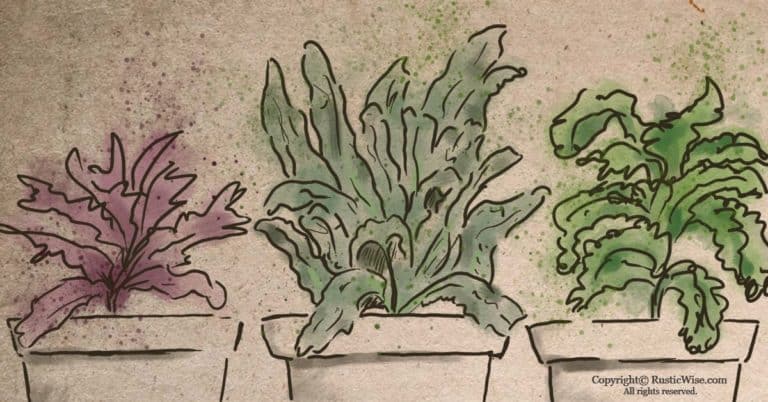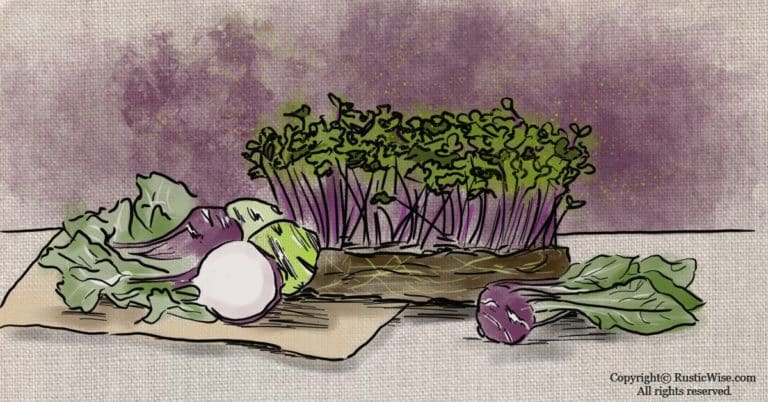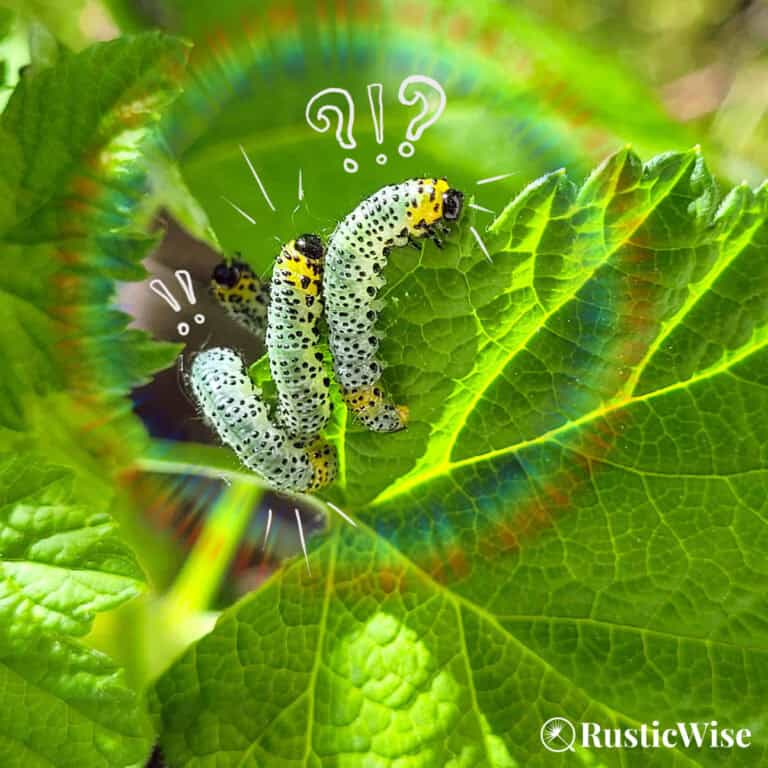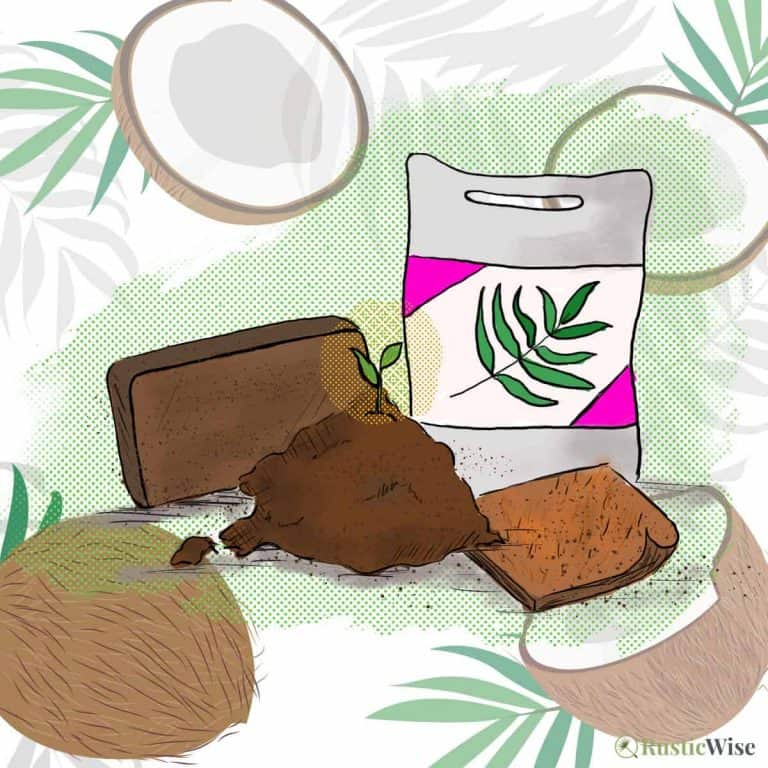Best Growing Mats for Microgreens: A Handy Comparison
Don’t want to deal with the mess of using soil to grow indoor microgreens? Grow mats provide a cleaner growing medium and reduce the risk of developing soil borne diseases.
If you’re looking for the best growing mats for microgreens, we’ll take a closer look at 6 common kinds: hemp, jute (burlap), coconut coir, bamboo, felt, and hydroponic grow pads (a mixture of wood fibers). Spoiler alert—hemp mats are our top pick for overall moisture retention, sustainability, and microgreen results. Jute or burlap are a close second, and are the more affordable choice.
If you’re looking for the ideal mat for growing microgreens hydroponically, let’s look at each material’s benefits and weaknesses and compare them to help you make an informed decision.
Do you need to use a growing mat for microgreens?
Yes, when growing hydroponically, you need to use some type of growing medium for microgreens in which to anchor the roots of the plants. Many growers choose to use a grow mat as it’s mess-free, and simple to use.
There are other hydroponic growing substrates such as rockwool, gravel, or clay pebbles, but I don’t recommend these for growing microgreens indoors. Why? Because these mediums aren’t suitable for the high-density sowing and small size of microgreens.
The other option is to grow in soil, or a soilless medium.
Common growing mediums for microgreens
There’s more than one way to grow these tiny greens! Most substrates for micros fall under three broad categories.
- Soil: By far the most common way to start your tray is by using quality organic potting soil. This is not the same stuff you get from your outdoor garden topsoil. Most home growers choose high quality potting mixes that contain the right amount of nutrients to support microgreen growth. No need to add additional fertilizer when using quality soil (unless you’re growing micros with longer grow cycles).
- Soilless: There are many types of soilless mixes including perlite, vermiculite, coco coir, and peat moss. As these ingredients contain little to no nutrients, you’ll need to add a good fertilizer or compost for healthy growth. Many people use a soil mix with organic potting soil mixed with a soilless medium to improve water retention.
- Growing pads: If you choose to go the hydroponic route, you’ll need some type of mat to anchor the tiny roots. Plus, you’ll need to add a liquid fertilizer to provide the proper nutrients to grow.
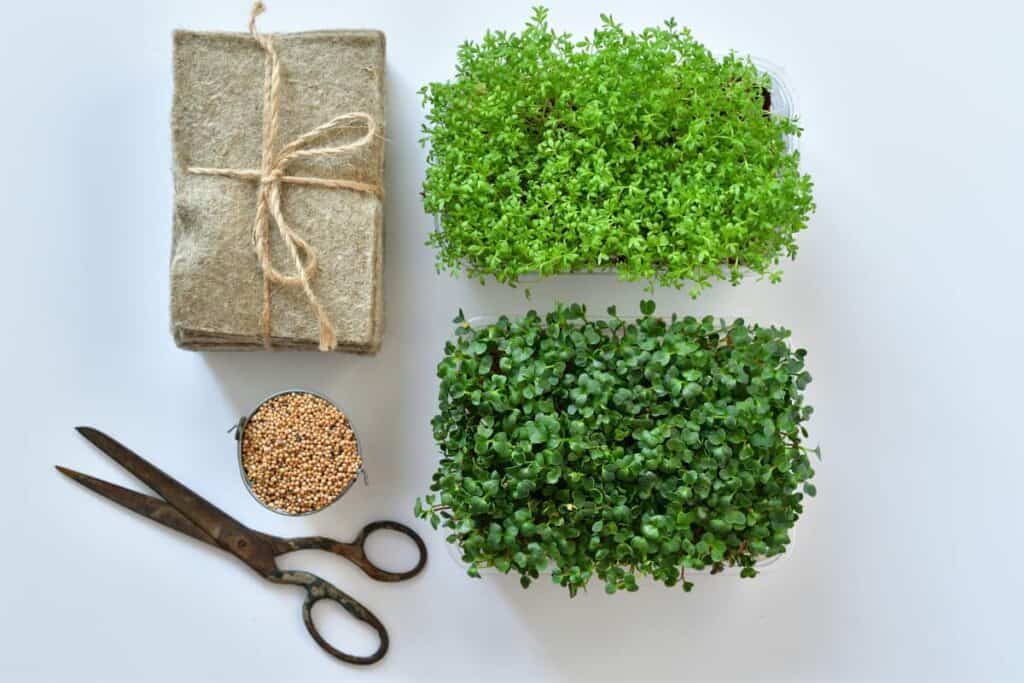
Soil vs. hydroponic method for microgreens
It’s important to know the difference between growing with soil and growing with hydroponics.
When growing in soil, the plant relies on its roots to take in all the nutrients it needs from the soil. If you’re using quality soil, there’s typically no need to add additional fertilizer (the exception is for longer growing micros, or those that regrow such as pea shoots).
As many microgreens have fairly short grow cycles (2 weeks or less), you can save on having to splurge on fertilizer when growing in soil.
The downside to using soil is the risk of harmful pathogens and occasional mold issues (from overwatering). Large bags of potting mix can also take up a lot of room. Plus, soil can get messy!
But with hydroponics, there is no soil. Instead, roots are placed in water which contains the nutrients the plant needs. With such a structure, some plants, including microgreens, can grow very well.
The downside to a water-based system is that you’ll need to use a liquid fertilizer such as sea kelp. Grow mats can also be pricy, depending on the material, and whether you buy in bulk. And, some seeds grow better in soil. This includes peas and sunflower microgreens.
Can you reuse your growing mat?
No, it’s not a good idea to reuse any type of grow pad after harvesting microgreens. Once the tiny roots become embedded in the material, it’s nearly impossible to remove them all. This may lead to bacterial or fungal growth caused by decaying matter in your next batch.
Best to start fresh and cut yourself a new square of fabric! Most grow mats are compostable which provides fodder for your compost bin.
Finding the best growing mats for microgreens
These greens have all the nutrients of your full-grown greens, but they’re easy to grow in any household. While growing microgreens is a fairly easy process, it can be a bit tricky to find the best growing mats for microgreens.
When selecting the best growing mats for microgreens, it’s important to consider a few key factors. Here’s what to look for when selecting the best growing mats for microgreens:
- Neutral pH: The growing mat should have a neutral pH so that it doesn’t interfere with the growth of your greens.
- Water retention: Look for mats that will retain moisture well without becoming soggy or developing mold. Good water retention also means less watering!
- Natural materials: Natural materials are preferable as they will be more porous and breathable than synthetic fibers.
- Compostable or biodegradable: The ability to breakdown after each use is ideal. If you have a backyard compost, you can just add used mats to the pile.
- Organic: Fibers grown without the use of chemicals and pesticides may not be on the top of the list for some, but it’s definitely preferable.
Let’s take a look at some of the most common types of mat options for growing mediums.
1. Hemp mats
Woven hemp mats are made from the stalk fibers of the Cannabis sativa plant. It’s a remarkably durable fiber with amazing moisture retention abilities (hemp can hold up to 1050 percent of its weight in water). By some estimates, hemp fiber is about 3 times stronger than cotton.¹
Hemp grow mats are also breathable (which means less chance of developing mold issues). By nature, this type of fabric is also resistant to mold, mildew, and other microbes.¹ It’s also pH neutral to boot.
The downside to this growing medium is the price tag. You can buy them from Bootstrap Farmer and Johnny’s Seeds. On average, a 10 X 20 inch grow mat will cost between $2–$3.
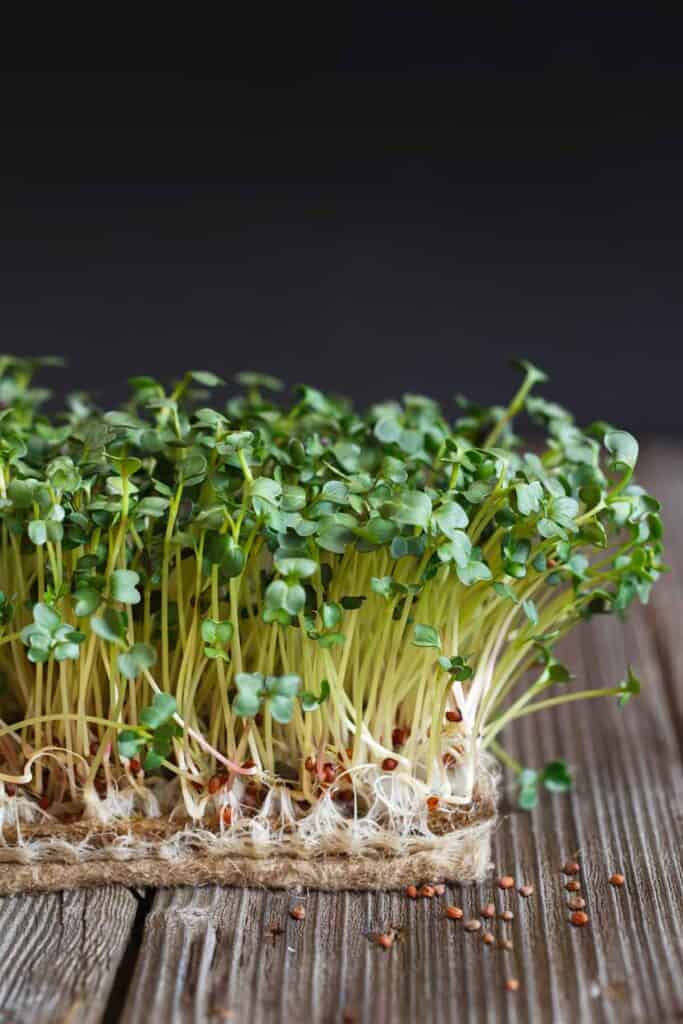
Credit: Vector State
2. Jute (burlap) pads
Jute mats, also known as burlap or gunny cloth are comprised of fibers of the jute plant. The main type of plant cultivated for fabric is white jute (Corchorus olitorius).² This fabric is composed of cellulose and lignin which makes this a lightweight and breathable fabric.
Jute plants grow up to 10 feet tall. When harvested, the fibers are extracted as a long string, which is why you’ll often find the jute plant used for making yarn or string.²
These natural fibers easily absorb water, but also dries out quickly. You may find yourself watering your microgreens more often. It takes a bit of practice to get it right with burlap.
Wheatgrass grows well on burlap. When you’re done harvesting your tray of microgreens, you can toss this grow pad into your compost pile.
Jute mats are more affordable than hemp, coming in at around $2 for one 10 X 20 mat.
3. Coconut coir growing pads
Coconut coir is made of the fibrous material of coconut husks from the coconut palm tree (Cocos nucifera).
While you can get compressed coco coir bricks that you rehydrate to form a soilless medium, you can also find woven coconut fibers in mat form.
While l like coco coir bricks to use as part of a soilless mix, I’m lukewarm about the mats. For some reason, while coco peat (when rehydrated and used as soilless medium) is great for holding water, the mats don’t have the same moisture retention properties.
Most coco coir grow mats have a rubber backing to help it hold it’s shape. This makes it harder to decompose.
4. Biostrate grow mats (felt)
Biostrate is a type of felt-based material used for hydroponic growing as it holds water well and is pH balanced. It’s made of a blend of natural fibers and biopolymers.
While they say it’s biodegradable, it’s only suitable for industrial composting facilities. It won’t decompose in your backyard compost.
Many growers say this type of grow pad is a bit tricky to use for microgreens as it can take some trial and error to get moisture levels right.
5. Wood-based hydroponic grow pads
Made of wood fibers, these grow pads are fully compostable. The downside to this type of grow pad is that once it gets wet, it can’t be readjusted and quickly falls apart.
With other grow mats, wood-based grow pads take some practice. The wood holds water well during germination (sometimes too well, leading to mold growth). Avoid overwatering to begin with. When exposed to sunlight, it quickly dries out.
This is a fairly affordable option and something to explore if you don’t mind a bit of experimentation.
6. Bamboo microgreen grow mats
Bamboo cellulose is extracted from the inner pith of the bamboo stalk, as well as the leaves to create a sustainable fabric.
Bamboo fabric is highly absorbent and breathable. It’s also naturally resistant to bacterial growth.
Works well for growing smaller seeds such as broccoli or kohlrabi microgreens.
A study on different types of growing mediums for microgreens
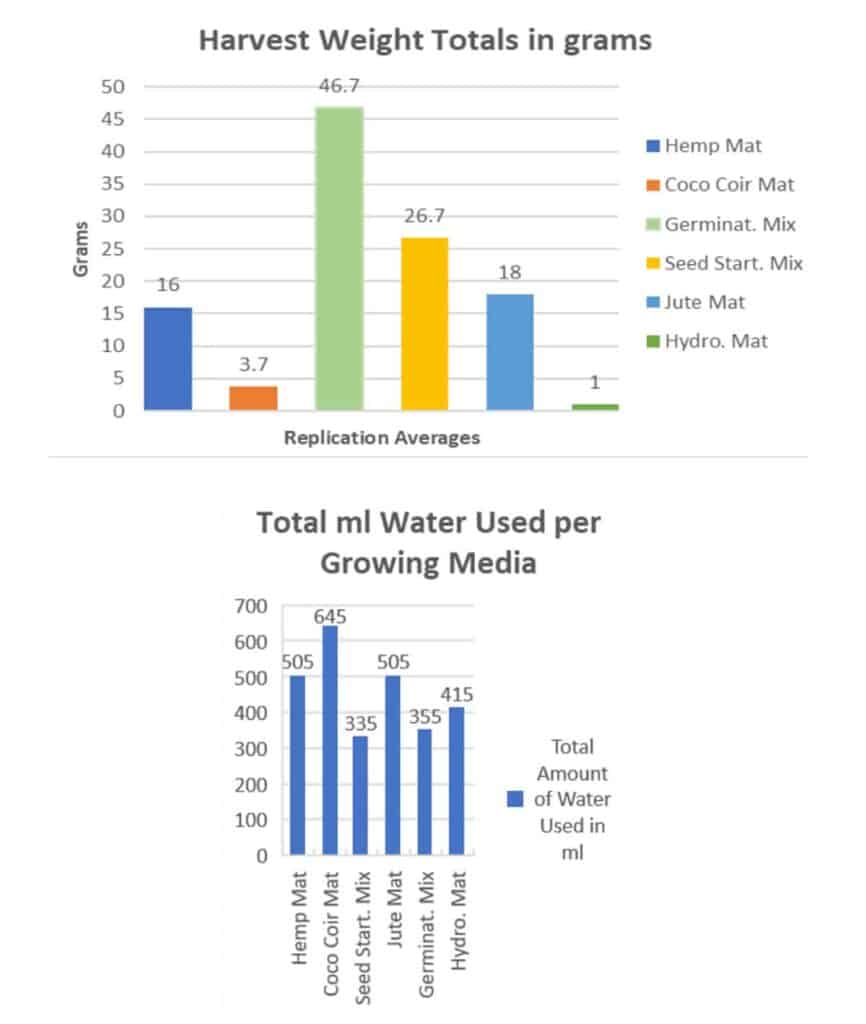
Credit: Colorado State University
I stumbled upon an interesting evaluation of different growing mediums from Colorado State University. Researchers cultivated arugula microgreens on 6 different mediums in a temperature-controlled greenhouse setting.³
They examined the growth of arugula micros using a jute mat, hemp mat, coconut coir mat, hydroponic grow mat, seed starter mix, and germinating mix.
The results showed, “The germinating mix and the seed starter mix had the highest harvest weight totals and required the least amount of water, overall. The coconut coir mat required the most amount of water. The hydroponic grow mat produced the least amount of microgreens.”³
In terms of grow mats, hemp and jute mats came out on top, in terms of least water required, and highest harvest weights.
Best overall type of microgreen mat for growing indoors
So, what’s our top pick for this type of growing mat? Hemp claims the top spot in our books as it checks off all the important factors (good water retention, biodegradable, pH neutral). Plus, it produces a good harvest yield. Have a look at the Terrafibre Hemp Grow Mat Roll – 10″ x 120′ (💖 check out our recommended products 🛍️)
The downside is that it’s a bit pricy. Jute mats are also a great choice, and a more affordable one.
Tip: To get the most bang-for-your-buck, buy hemp or burlap in large rolls and cut to fit your grow tray. This will cost less per tray, and is less expensive than buying precut mats.
Related questions
What microgreens grow well on hydroponic mats?
Some types of micros take well to hydroponic growing. Try growing some of the following seeds on a mat: wheatgrass, arugula, broccoli, cabbage, kale, kohlrabi, or mustard.
What microgreens grow better in soil?
Typically, larger seeds such as pea shoots, sunflower seeds, nasturtiums grow better in nutrient rich soil rather than hydroponic pads.
👉 If you like this post, see our Complete Guide to Growing Microgreens at Home. 🌱
Would you like more timeless tips via email?
Fun tips to help you live an independent, self-sustaining lifestyle. Opt-out at any time.


References
- Sewport, What is Hemp Fabric: Properties, How its Made and Where, https://sewport.com/fabrics-directory/hemp-fabric. Accessed February 2023.
- Sewport, What is Jute Fabric: Properties, How its Made and Where, https://sewport.com/fabrics-directory/jute-fabric. Accessed February 2023.
- Mountain Scholar (Colorado State University), Microgreen production: an evaluation of types of growing media, https://mountainscholar.org/handle/10217/192851?show=full. Accessed February 2023.

Author: Josh Tesolin
Josh is co-founder of RusticWise. When he’s not tinkering in the garden, or fixing something around the house, you can find him working on a vast array of random side projects.

